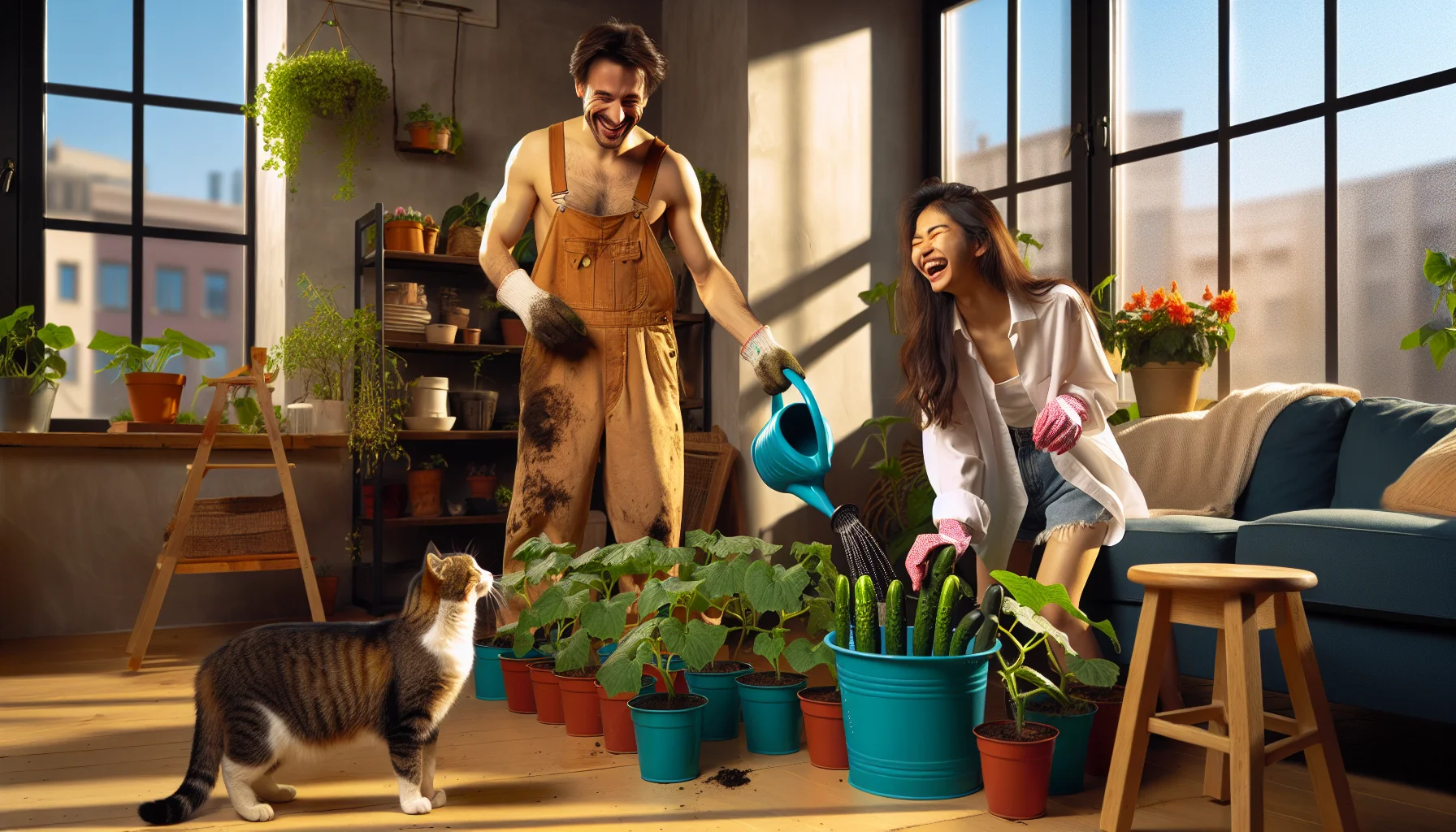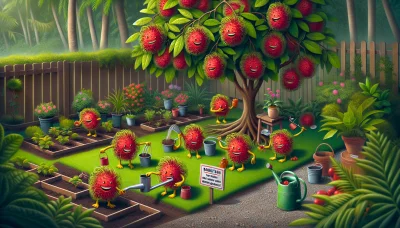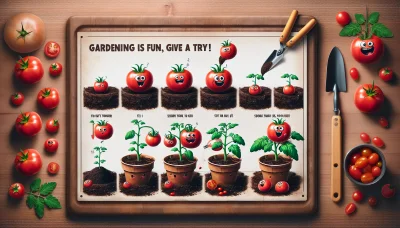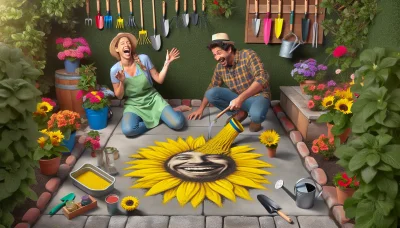Starting cucumbers indoors Quiz
Test Your Knowledge
Question of
Starting Cucumbers Indoors: A Beginner's Guide
Starting cucumbers indoors offers numerous benefits that can enhance your gardening experience and improve the yield of your cucumber plants. One of the primary advantages is the ability to control the growing environment, including temperature, humidity, and light, which can lead to stronger, healthier plants. This early start also extends the growing season, especially in regions with shorter summers, allowing for an earlier harvest. Additionally, starting seeds indoors can reduce the risk of pest and disease problems, giving your cucumbers the best possible start. By beginning your cucumber cultivation indoors, you can ensure a robust start for your plants that translates into a bountiful harvest.
What You Need to Start Cucumbers Indoors
- Seeds: Choose cucumber seeds that are best suited for indoor cultivation.
- Pots: Use pots or containers with good drainage. Starting trays or small pots are ideal for beginning seeds.
- Soil: A well-draining, nutrient-rich potting mix is essential for cucumber seedlings.
- Light: Cucumbers require a lot of light. Place them near a sunny window or use artificial grow lights.
- Warmth: Maintain a consistent temperature between 70°F and 75°F, which is ideal for germination.
Step-by-Step Guide to Planting Cucumbers Indoors
- Choose a container with good drainage. Cucumbers require room for their roots to spread, so make sure your container is at least 12 inches deep.
- Prepare the soil. Use a high-quality potting mix that is loose and well-draining. Consider mixing in a slow-release fertilizer to provide nutrients over time.
- Sow the seeds. Plant cucumber seeds about 1 inch deep into the soil. It's a good idea to plant 2-3 seeds per pot in case some do not germinate.
- Water the seeds gently. Keep the soil moist but not waterlogged to encourage germination.
- Set the pots in a warm location. Cucumber seeds germinate best at temperatures between 70-95°F (21-35°C). A warm, sunny windowsill or a heat mat can help maintain the ideal temperature.
- Thin the seedlings. Once the seedlings have sprouted and have a couple of true leaves, thin them out, leaving the strongest seedling in each pot.
- Provide plenty of light. After germination, cucumbers need a lot of light to grow strong and healthy. Place them in a spot that receives at least 6-8 hours of sunlight per day or use grow lights.
- Continue to water and feed. Keep the soil consistently moist and apply a balanced liquid fertilizer every two weeks to support growth.
Caring for Your Indoor Cucumber Seedlings
Caring for cucumber seedlings indoors requires attention to their basic needs to ensure a strong start. Watering should be done carefully; the soil should be kept moist but not waterlogged, as cucumber seedlings are particularly sensitive to overwatering. It's best to water them in the morning, allowing any excess moisture to evaporate during the day. Feeding your seedlings is also crucial for their development. A half-strength liquid vegetable fertilizer applied every two weeks will support their growth without overwhelming them with nutrients. Lastly, adequate lighting is essential for the health of indoor cucumber seedlings. They need at least 6 to 8 hours of sunlight per day, so placing them near a south-facing window or under grow lights can ensure they receive the light they need to thrive. By meeting these care requirements, your cucumber seedlings will develop into strong, healthy plants ready for transplanting.
Transplanting Cucumbers Outdoors
Transplanting cucumber seedlings outdoors requires careful timing and preparation to ensure the plants thrive in their new environment. The best time to transplant cucumbers is after the last frost date when the soil has warmed to at least 60°F (15°C), as cucumbers are very sensitive to cold. Prepare the garden bed by adding compost and a balanced fertilizer to enrich the soil. Harden off the cucumber seedlings by gradually exposing them to outdoor conditions over a week to reduce shock. Dig holes that are slightly larger than the seedlings' root balls, spacing them about 36 to 60 inches apart to allow for growth and air circulation. Water the plants thoroughly after transplanting to settle the soil around the roots and continue to provide at least one inch of water per week. Mulching around the plants can help retain soil moisture and regulate temperature.
Common Problems and Solutions for Growing Cucumbers Indoors
| Problem | Solution |
|---|---|
| Poor Germination | Ensure seeds are fresh and use a heat mat to maintain soil temperature around 70°F (21°C). |
| Leggy Seedlings | Provide more light by using grow lights for 14-16 hours a day and rotate pots for even growth. |
| Pests (e.g., Spider Mites, Aphids) | Use a neem oil spray or introduce beneficial insects like ladybugs to control pest populations. |
| Yellowing Leaves | Check for over or under-watering and adjust accordingly. Ensure proper nutrient levels with a balanced fertilizer. |
| Poor Fruit Development | Hand pollinate flowers using a small brush or ensure adequate pollination if growing compatible varieties together. |












